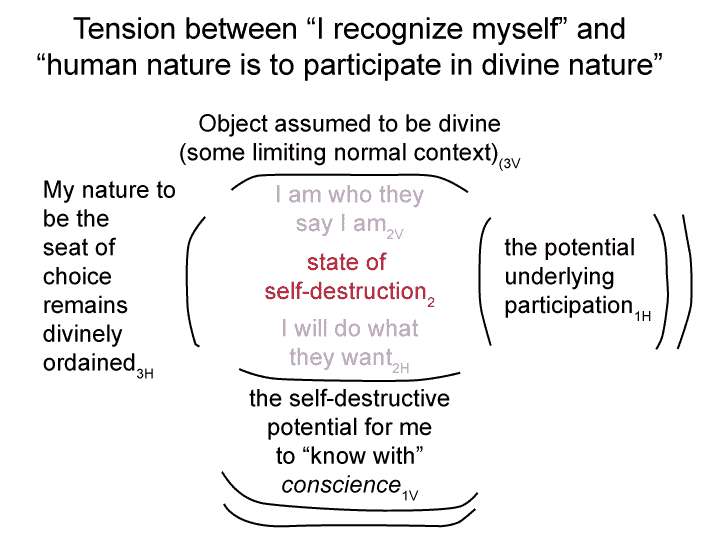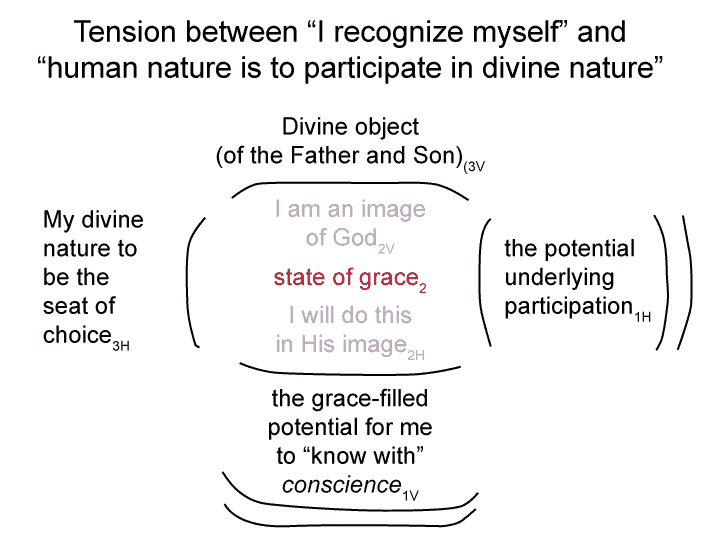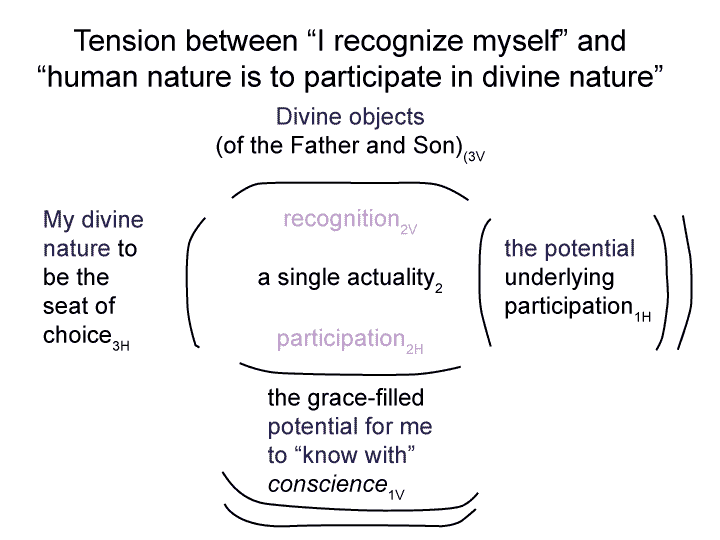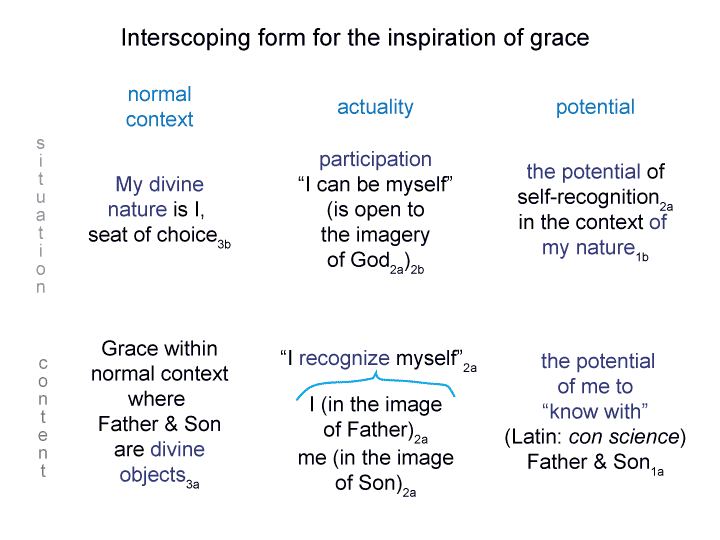Man and Sin by Piet Schoonenberg (1964) 2.1DM
Summary of text [comment] pages 68 and 69
[In the intersection-based model, self-destruction directly influences ‘what I am able to recognize (in particular, not my true myself, but an alienating idolatrous distortion)’.
Self-destruction indirectly alters my dispositions or nature (decreasing my capacity for fullness and meaning).
Perhaps, the terms ‘self-destruction’ or ‘state of self-destruction’ ought to label the single actuality of recognition and participation?
After all, Schoonenberg treated self-destruction as if it were an actuality.]
Man and Sin by Piet Schoonenberg (1964) 2.1DL-2
Summary of text [comment] pages 68 and 69
[In the prior figure, recognition2V becomes ‘I am an image of God2V’, which is the same as ‘I recognize myself in the objects of the Father and the Son2V’.
Similarly, participation2H becomes ‘I will do this in His image2H’].
Man and Sin by Piet Schoonenberg (1964) 2.1DK
Summary of text [comment] pages 68 and 69
[How does grace enter into the picture?
In both the interscope and intersection, grace directly influences ‘what I am able to recognize (in particular, my true self through the divine objects)’.
Grace indirectly alters my dispositions or nature (increasing my capacity for fullness and meaning).
Perhaps, the words ‘grace’ or ‘state of grace’ ought to label the single actuality for the intersection of recognition and participation.
After all, Schoonenberg treated grace as if it were an actuality.]
Man and Sin by Piet Schoonenberg (1964) 2.1DI
Summary of text [comment] pages 68 and 69
[How do the interscoping forms of participation and recognition (1.2 DH) become an intersection?
The content axis (pertaining to recognition) becomes the horizontal (or hidden) axis.
The situation axis (pertaining to participation) becomes the vertical (or visible) axis.]
Man and Sin by Piet Schoonenberg (1964) 2.1DH-2
Summary of text [comment] pages 68 and 69
[What happened?
The content-level normal contexts juxtapose.
The normal context of one (2.1 DE) is:
Grace contributes to bringing I recognize myself into actuality.
That actuality is something, where something is: I am an image of God.
The normal context of the other (2.1 DH) is:
Grace sets the Father and Son as divine objects.
The actuality is something, where something is: I recognize myself.
The actualities are very similar, but they are not identical.
Note that normal contexts are exclusive, so if I go from one to the other, I feel like I am flipping a switch.
So, what happened?
I brought two normal contexts close together in order to step from one to the other. The fact that they are similar allows proximity. The fact that they are different means that the step is a discontinuity.]
Man and Sin by Piet Schoonenberg (1964) 2.1DG
[Why do I draw these two nested forms together?
I could say that, since God Recognizes Himself, and since we are created in the image of God, that I anticipate that human nature should participate in divine nature.
However, consider all other animals. Most animals (with few exceptions) do not recognize themselves in a mirror. They do not exhibit self-recognition. Their animal natures do not seem to hold divine attributes. However, they are not without recognition. They recognize what ‘they want to participate in’, ‘what they want to avoid’, and ‘what they can safely ignore’.
So, in as much as humans are animals, there is an analogy.
Animals participate in what they recognize.
So do humans.
Humans recognize divine nature.
Human nature is to participate in the divine nature.]




